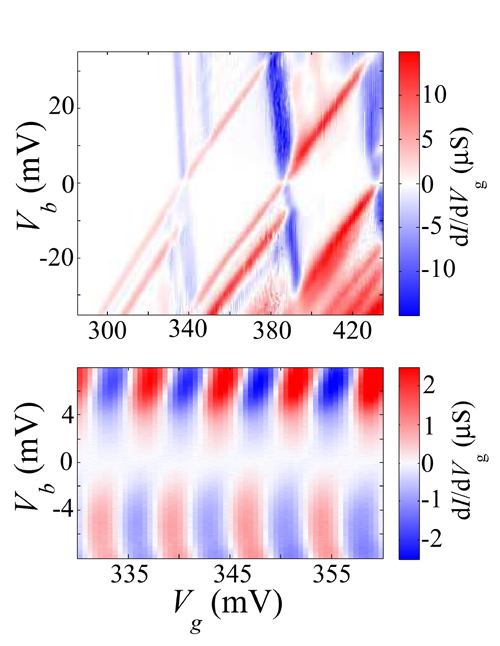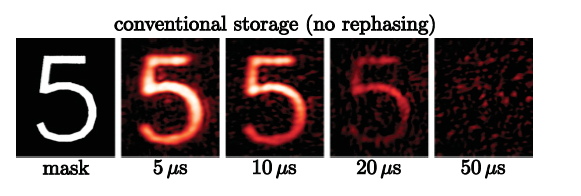| |
 |
|
DNA computing circuits using libraries of DNAzyme subunits
We report the construction of a DNA-based computational platform that uses a library of catalytic nucleic acids (DNAzymes)10, and their substrates, for the input-guided dynamic assembly of a universal set of logic gates and a half-adder/half-subtractor system.We demonstrate multilayered gate cascades, fan-out gates and parallel logic gate operations. In response to input markers, the system can regulate
the controlled expression of anti-sense molecules, or aptamers, that act as inhibitors for enzymes. Johann Elbaz, Oleg Lioubashevski, Fuan Wang, Francoise Remacle, Raphael D. Levine and Itamar Willner Nature Nanotechnology, PUBLISHED ONLINE: 30 MAY 2010 | DOI: 10.1038/NNANO.2010.88 see also http://www.newscientist.com/article/dn18989-dna-logic-gates-herald-injectable-computers.html
|
|
 |
 |
|
Logic implementations using a single nanoparticle?protein hybrid
Izhar Medalsy, Michael Klein, Arnon Heyman, Oded Shoseyov, F. Remacle, R. D. Levine and Danny Porath PUBLISHED ONLINE: 18 APRIL 2010 | DOI: 10.1038/NNANO.2010.62
NATURE NANOTECHNOLOGY | ADVANCE ONLINE PUBLICATION | www.nature.com/naturenanotechnology 1© 2010 A Set–Reset machine is the simplest logic circuit with a built-in memory. Its output is a (nonlinear) function of the input and of the state stored in the machine’s memory. Here, we report a nanoscale Set–Reset machine operating at room temperature that is based on a 5-nm silicon nanoparticle attached to the inner pore of a stable circular protein. The nanoparticle–protein hybrid can also function as a balanced ternary multiplier. Conductive atomic force microscopy is used to implement the logic input and output operations, and the processing of the logic Set and Reset operations relies on the finite capacitance of the nanoparticle provided by the good electrical isolation given by the protein, thus enabling stability of the logic device states. We show that the machine can be cycled, such that in every successive cycle, the previous state in the memory is retained as the present state. The energy cost of one cycle of computation is minimized to the cost of charging this state.
|
|
 |
 |
|
Ternary Logic Implemented on a Single Dopant Atom Field Effect Silicon Transistor
Ternary Logic Implemented on a Single Dopant Atom Field Effect Silicon Transistor M. Klein, J.A. Mol, J. Verduijn, G. P. Lansbergen, S. Rogge, R. D. Levine and F. Remacle We provide an experimental proof of principle for a ternary multiplier realized in terms of the charge state of a single dopant atom embedded in a Fin Field Effect Transistor (Fin-FET). Robust reading of the logic output is made possible by using two channels to measure the current flowing through the device and the transconductance. A read out procedure that allows for voltage gain is proposed. Long numbers can be multiplied by addressing a sequence of Fin-FET transistors in a row.  |
|
 |
 |
|
Storage of images in atomic coherences in a rare-earth-ion-doped solid
Storage of images in atomic coherences in a rare-earth-ion-doped solid
G. Heinze,* A. Rudolf, F. Beil, and T. Halfmann†
Institut f¨ur Angewandte Physik, Technische Universit¨at Darmstadt, Hochschulstraße 6, D-64289 Darmstadt, Germany
(Received 28 August 2009; published 25 January 2010) PHYSICAL REVIEW A 81, 011401(R) (2010)
We report on storage of images in atomic coherences driven by electromagnetically induced transparency in
a doped solid. We demonstrate image storage times up to the regime of milliseconds (i.e., more than two orders
of magnitude larger than in gaseous media). Our data also reveal an improvement in the spatial resolution of
the retrieved images by a factor of 40. The long storage times become possible by applying additional radio
frequency pulse sequences to drive rephasing of the atomic coherences.Moreover, the perturbing effect of atomic
diffusion (which significantly limits image storage times in gases) is absent in the solid. In addition, we monitored
pronounced oscillations in the intensity of the retrieved image versus the storage time. These oscillations are
due to the beating of dark-state polaritons. All of these results demonstrate the superior properties of coherently
driven optical data storage in solids. 
|
|
 |
|
|

